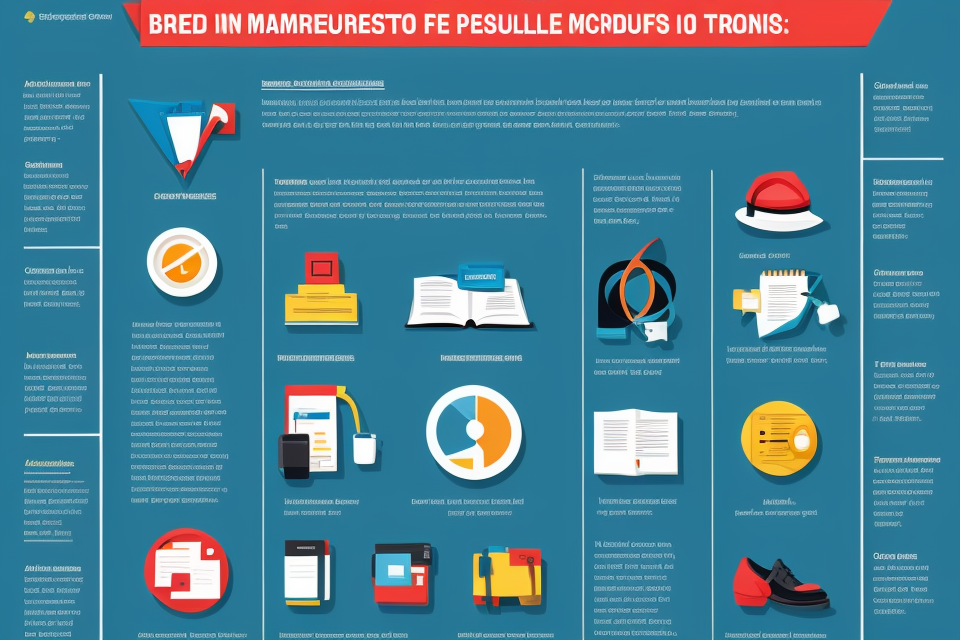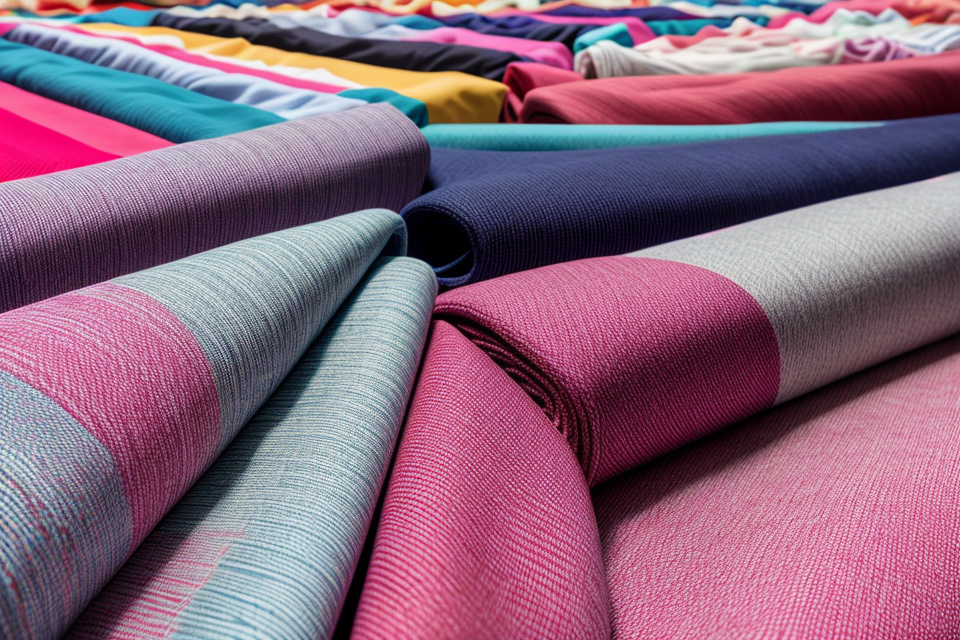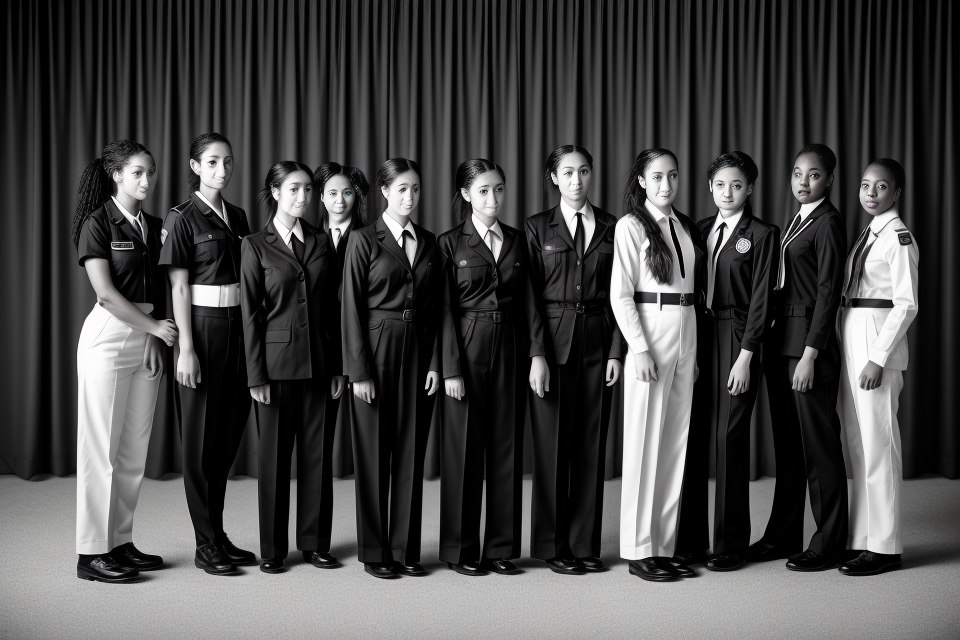
Uniforms are an essential part of many industries, from the military to healthcare, education, and beyond. But have you ever wondered about the materials that go into making these uniforms? In this article, we will explore the most common materials used in uniforms and why they are chosen for specific purposes. From durable fabrics to moisture-wicking technologies, we will delve into the world of uniform design and discover how different materials can impact the performance and comfort of those who wear them. So, buckle up and get ready to learn about the fascinating world of uniform materials!
Uniforms are typically made from materials that are durable, comfortable, and functional. Common materials used in uniforms include cotton, polyester, and nylon. Cotton is often used because it is soft, breathable, and comfortable to wear. It is also relatively inexpensive and easy to care for. Polyester and nylon are synthetic materials that are commonly used because they are lightweight, moisture-wicking, and easy to clean. These materials are often used in uniforms that require a more formal or professional appearance, such as business attire or military uniforms. In addition to being practical, uniforms often feature distinctive designs or insignia that identify the wearer’s occupation, organization, or rank.
Common materials used in uniforms
Polyester
Polyester is a synthetic fiber that is made from a combination of polymers. It is known for its durability, strength, and resistance to wrinkles, making it a popular choice for uniforms.
Advantages
- Polyester is a versatile fabric that can be used for a variety of uniforms, including those for the military, law enforcement, and healthcare industries.
- It is resistant to shrinking, fading, and wrinkling, which makes it easy to maintain and keep looking professional.
- Polyester is also known for its ability to withstand a lot of wear and tear, making it a durable choice for uniforms that are worn every day.
Disadvantages
- Polyester can be prone to static electricity, which can be a problem for those who work in environments where static electricity is a hazard.
- It can also be less breathable than other fabrics, which can make it uncomfortable to wear in hot weather.
- Polyester is a synthetic material, which means it is not as environmentally friendly as natural fabrics like cotton or wool.
Examples
- The United States Army’s Army Combat Uniform (ACU) is made from a polyester and cotton blend fabric.
- The Navy Working Uniform (NWU) is also made from a polyester and cotton blend fabric.
- Many healthcare uniforms, such as scrubs, are also made from polyester.
Cotton
Cotton is a commonly used material in uniforms due to its natural origin, comfort, and durability.
- Definition: Cotton is a soft, fluffy staple fiber that grows in a boll around the seeds of the cotton plant. It is a natural fiber, and when processed, it is used to make fabrics that are soft, breathable, and comfortable to wear.
- Advantages: Cotton is a popular choice for uniforms due to its numerous advantages. Firstly, it is a natural fiber that is breathable, comfortable, and moisture-wicking. Cotton is also easy to care for, as it can be machine washed and dried without losing its shape or color. Additionally, cotton is a durable material that can withstand regular wear and tear, making it a cost-effective choice for uniforms.
- Disadvantages: Despite its many advantages, cotton has some disadvantages that are worth considering. For example, cotton is a porous material that can absorb odors and stains, which can be a problem for uniforms that need to be worn repeatedly. Additionally, cotton can be expensive, especially if it is organic or comes from specialty cotton plants.
- Examples: Cotton is commonly used in uniforms for a variety of industries, including healthcare, hospitality, and food service. For example, many hospitals require their staff to wear cotton scrubs, while hotels often provide their employees with cotton uniforms. In the food service industry, cotton is often used to make chef jackets and aprons.
Nylon
Nylon is a synthetic polymer that is commonly used in the production of uniforms due to its various properties.
- Definition
- Nylon is a strong, lightweight, and durable synthetic material that is made from polymerizing a monomer called hexamethylene diamine.
- Advantages
- Nylon is highly resistant to wear and tear, making it an ideal material for uniforms that are worn regularly and may be exposed to rough conditions.
- Nylon is also easy to care for, as it can be machine washed and dried without losing its shape or color.
- Additionally, nylon is relatively inexpensive compared to other synthetic materials, making it a popular choice for uniforms.
- Disadvantages
- Nylon can be prone to wrinkling, which may not be desirable for some uniforms.
- Nylon can also be somewhat transparent, which may not be suitable for uniforms that require a high level of privacy.
- Furthermore, nylon can be somewhat susceptible to damage from heat, so it may not be the best choice for uniforms that will be exposed to high temperatures.
- Examples
- Nylon is commonly used in the production of police uniforms, as it is highly durable and resistant to wear and tear.
- Nylon is also used in the production of military uniforms, as it is lightweight and easy to care for.
- Additionally, nylon is often used in the production of sports uniforms, as it is breathable and moisture-wicking.
Wool
Wool is a common material used in the production of uniforms due to its numerous advantages. Wool is a natural fiber that is derived from sheep and is known for its softness, warmth, and durability. It is a versatile fabric that can be used to create a wide range of uniforms, including those for the military, police, and firefighters.
One of the primary advantages of wool is its ability to insulate. Wool is an excellent material for keeping a person warm in cold weather and is often used in the production of winter uniforms. Wool is also known for its breathability, which makes it an ideal material for use in uniforms that are worn in hot weather. Wool is able to wick moisture away from the body, which helps to keep the wearer cool and comfortable.
Another advantage of wool is its durability. Wool is a strong fabric that is able to withstand a lot of wear and tear. This makes it an ideal material for use in uniforms that are worn in tough environments, such as those worn by military personnel and firefighters. Wool is also resistant to shrinking, which means that it will maintain its shape and size even after multiple washes.
Despite its many advantages, wool does have some disadvantages. One of the main disadvantages of wool is that it is prone to wrinkling. This can make it difficult to maintain a professional appearance when wearing a wool uniform. Wool is also more expensive than some other materials, which may make it less accessible to some organizations.
Examples of uniforms that are made from wool include the military uniforms of the United States, Canada, and the United Kingdom. Wool is also commonly used in the production of police uniforms and firefighter uniforms. Overall, wool is a popular material for use in the production of uniforms due to its insulating properties, breathability, durability, and resistance to shrinking.
Synthetic blends
Definition
Synthetic blends are a type of fabric that are made from a combination of synthetic fibers and natural fibers. These fabrics are designed to provide a balance between the durability and performance of synthetic fibers and the comfort and aesthetic appeal of natural fibers.
One of the main advantages of synthetic blends is their ability to provide a high level of comfort and breathability while also being highly durable and resistant to wear and tear. This makes them an ideal choice for uniforms that need to withstand regular wear and tear while still providing comfort to the wearer.
Another advantage of synthetic blends is their ability to wick moisture away from the body, which helps to keep the wearer cool and dry in hot weather. This is especially important for uniforms that are worn in hot and humid environments, such as construction sites or outdoor events.
One potential disadvantage of synthetic blends is that they can be more expensive than other types of fabrics. However, the increased durability and performance of synthetic blends can help to offset this cost over time.
Another potential disadvantage of synthetic blends is that they may not be as environmentally friendly as natural fibers. However, many synthetic fibers are now made from recycled materials, which helps to reduce their environmental impact.
Some examples of synthetic blends that are commonly used in uniforms include polyester-cotton blends, nylon-cotton blends, and spandex-cotton blends. These fabrics are often used in uniforms for sports teams, military personnel, and law enforcement officers, among others.
Other materials
Other materials refer to any material that is not traditionally used in uniforms, such as synthetic fabrics, blends, and technical textiles. These materials are often chosen for their unique properties, such as durability, moisture-wicking, or fire resistance.
Other materials can offer several advantages over traditional uniform fabrics. For example, synthetic fabrics can be more durable and resistant to wear and tear, while technical textiles can provide superior protection against environmental hazards such as extreme temperatures or chemical exposure. Additionally, blending different materials can create fabrics that offer the best of both worlds, such as the strength of cotton with the moisture-wicking properties of polyester.
However, other materials can also have disadvantages. For example, some synthetic fabrics may not breathe as well as natural fibers, leading to discomfort or overheating in warm conditions. Additionally, some technical textiles may be more expensive or difficult to care for than traditional fabrics.
Examples of other materials used in uniforms include Kevlar, Cordura, and Gore-Tex. Kevlar is a strong and lightweight synthetic fiber often used in protective gear, while Cordura is a durable nylon fabric used in outdoor apparel. Gore-Tex is a waterproof and breathable membrane often used in outdoor clothing and footwear.
Factors affecting uniform material selection
Climate and environment
When selecting materials for uniforms, climate and environment play a crucial role in determining the appropriate fabrics and materials to use. Some of the key factors to consider include:
- Temperature: The temperature of the environment can greatly impact the type of fabric that is best suited for a uniform. For example, uniforms worn in hot and humid climates may require lightweight, breathable fabrics that are designed to wick moisture away from the body, such as cotton or polyester. On the other hand, uniforms worn in colder climates may require insulating materials that trap heat, such as wool or synthetic fill materials.
- Humidity: High levels of humidity can affect the way fabrics behave, and certain materials may not perform well in humid environments. For example, cotton can become heavy and uncomfortable when it’s wet, which can be a problem in high-humidity environments. On the other hand, moisture-wicking fabrics like polyester can help keep the wearer dry and comfortable in these conditions.
- Moisture resistance: Depending on the environment in which the uniform will be worn, it may be important to select materials that are resistant to moisture. For example, uniforms worn in wet or aquatic environments may require waterproof or water-repellent materials to keep the wearer dry.
- UV protection: Uniforms worn outdoors may require materials that offer UV protection to prevent sun damage to the skin. This is particularly important for uniforms worn in bright sunlight or in environments where the risk of sunburn is high.
Overall, when selecting materials for uniforms, it’s important to consider the specific climate and environment in which the uniform will be worn to ensure that the fabric is appropriate for the conditions.
Functionality
When selecting materials for uniforms, functionality is a critical factor to consider. The materials should be able to withstand the demands of the job while providing comfort and protection to the wearer. Here are some of the key considerations when it comes to functionality:
- Durability: Uniforms are subjected to wear and tear, so the materials used must be durable enough to withstand the demands of the job. For instance, uniforms for construction workers must be able to withstand the rough handling and exposure to harsh environments. The materials should be able to withstand abrasion, tearing, and fading, and should have a long lifespan.
- Comfort: Uniforms can be worn for extended periods, so comfort is an essential consideration. The materials should be soft, lightweight, and breathable to ensure that the wearer can move freely and remain comfortable throughout the day. Moisture-wicking properties are also important to keep the wearer dry and comfortable.
- Breathability: Breathability is a crucial factor in uniform material selection, especially for uniforms worn in hot and humid environments. The materials should allow for air circulation and allow sweat to evaporate quickly, keeping the wearer cool and comfortable.
- Water resistance: Uniforms that are designed for work in wet or humid environments should be made of materials that are water-resistant. This helps to keep the wearer dry and comfortable, and also protects the uniform from damage caused by moisture.
Overall, the materials used in uniforms must be functional, durable, comfortable, and breathable to ensure that the wearer can perform their job effectively and comfortably.
Professional image
- Colors
- Colors play a significant role in creating a professional image for uniforms. The choice of colors can convey different emotions and attitudes, and it is essential to choose colors that are appropriate for the industry or profession. For example, the color blue is often associated with trust and reliability, making it a popular choice for financial institutions or public safety uniforms. On the other hand, the color red is often associated with energy and excitement, making it a popular choice for sports teams or fast-food restaurants.
- Style
- The style of the uniform can also impact the professional image of the wearer. Uniforms that are well-fitting, clean, and wrinkle-free project a more professional image than those that are ill-fitting or poorly maintained. In addition, the style of the uniform can convey different messages, such as authority, tradition, or innovation. For example, a uniform with a traditional design and classic cut may convey a sense of authority and stability, while a uniform with a modern design and more relaxed fit may convey a sense of innovation and approachability.
- Branding
- Uniforms can also serve as a tool for branding and marketing. The design of the uniform can incorporate logos, slogans, or other branding elements that help to create a cohesive visual identity for the organization. This can help to build brand recognition and promote a positive image for the organization. In addition, the uniform can serve as a mobile billboard, promoting the organization’s products or services to customers or clients.
- Insignia
- Insignia, such as badges or patches, can also play a significant role in creating a professional image for uniforms. Insignia can convey information about the wearer’s role, rank, or status, and can help to establish a hierarchy within the organization. In addition, insignia can help to create a sense of identity and belonging for the wearer, reinforcing their sense of pride and loyalty to the organization.
FAQs
1. What are the common materials used in making uniforms?
The common materials used in making uniforms include cotton, polyester, nylon, wool, and various blends of these fabrics. The choice of material depends on the specific requirements of the uniform, such as durability, comfort, and functionality.
2. Why is cotton commonly used in making uniforms?
Cotton is a popular choice for uniforms because it is a natural fabric that is soft, breathable, and comfortable to wear. It is also durable and can withstand regular wear and tear. Additionally, cotton is a versatile fabric that can be easily dyed and printed, making it ideal for creating uniforms with specific designs and colors.
3. What are the benefits of using polyester in uniforms?
Polyester is a synthetic fabric that is commonly used in making uniforms because it is strong, durable, and resistant to wrinkles. It is also easy to care for and can be machine washed and dried without losing its shape or color. Polyester is often used in uniforms that require a professional, neat appearance, such as business attire or lab coats.
4. What are the advantages of using nylon in uniforms?
Nylon is another synthetic fabric that is commonly used in making uniforms. It is strong, lightweight, and water-resistant, making it ideal for uniforms that are exposed to harsh conditions or require protection from the elements. Nylon is also easy to care for and can be machine washed and dried without shrinking or losing its shape.
5. Why are blends of fabrics used in making uniforms?
Blends of fabrics are often used in making uniforms because they offer the best of both worlds in terms of durability, comfort, and functionality. For example, a cotton-polyester blend offers the softness and breathability of cotton with the strength and wrinkle-resistance of polyester. Similarly, a nylon-cotton blend offers the water-resistance of nylon with the comfort and durability of cotton. Blends can also help to reduce the cost of manufacturing uniforms while still providing the necessary performance characteristics.


